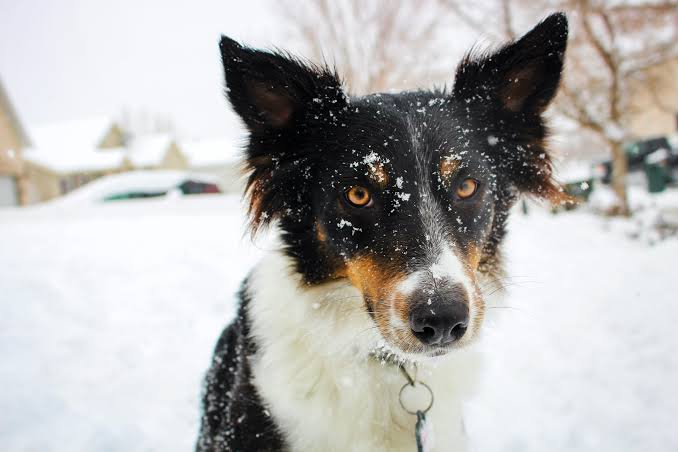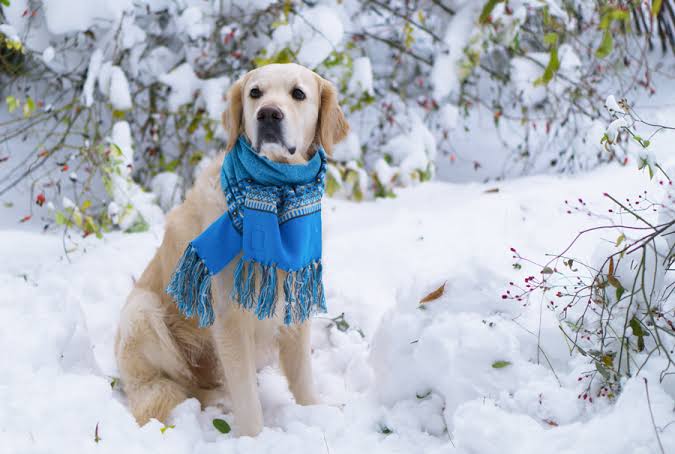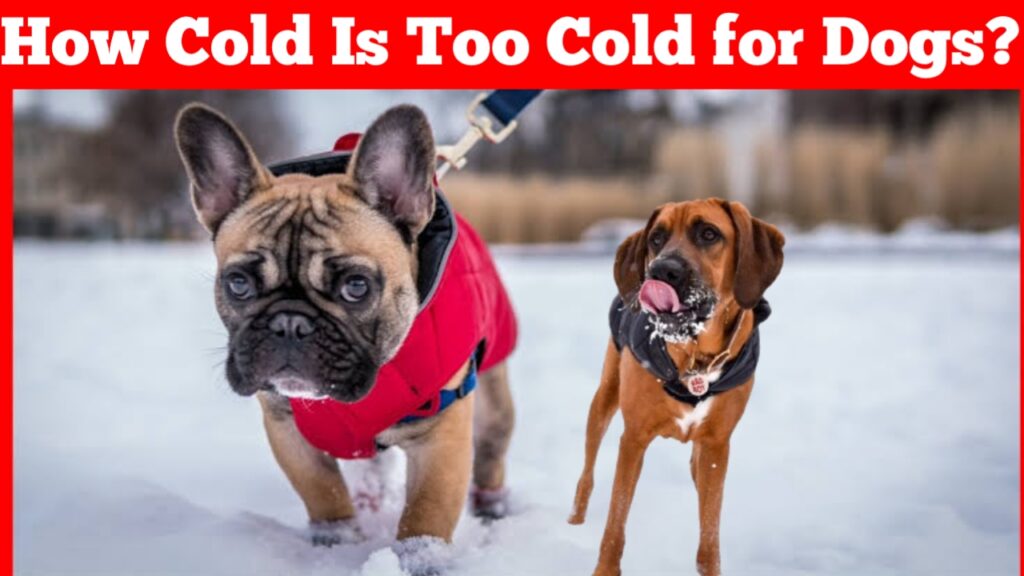How Cold Is Too Cold for Dogs ? We all know that dogs enjoy spending time outside, whether on a stroll, playing in the yard, or romping with four-legged friends at the dog park, but what about during the frigid winter months? How cold is too cold for dogs to go outside? When does a fun outing turn dangerous?
In reality, it relies on a variety of things. Let’s figure out what temperature is too cold for dogs.
Let’s take a closer look at the dangers of the winter weather and how we can protect our furry friends from the Cold.
Do Dogs get cold in winter ?
Yes, dogs can be cold in the winter, just like humans. While their fur offers some insulation, it does not usually protect them from intense cold. Breed, size, age, and health can all affect a dog’s ability to handle cold temperatures.
Signs that your dog may be overly cold include:
- Shivering
- Hunched posture
- Lifting or holding their paws off the ground
- Lethargy or muscle stiffness in extreme cases
To keep your dog warm, consider the following tips:
- Limit your time outside: Avoid spending extended periods of time outside in extreme cold weather.
- Dress them warmly with dog sweaters or coats, particularly for short-haired types. Provide warm refuge.
- Make sure they have a warm, insulated place to rest.
- Stay hydrated: Cold weather can be dry, so make sure they have access to drink.
If you observe any signs of hypothermia, such as excessive lethargy or weakness, seek veterinarian care right once.
How cold is too cold for dogs to be outside?

The temperature at which it gets too cold for dogs to go outside varies depending on breed, size, coat type, age, and health. Below are some general guidelines:
- Above 45°F (7°C): Most dogs should be fine, but keep in mind that individual tolerance varies.
- Below 45°F (7°C): Some cold-averse pets may become uncomfortable.
- Below 32°F (0°C): Smaller breeds, dogs with short or thin coats, pups, senior dogs, and those with medical issues should be properly checked.
- Below 20°F (-6°C): All Dogs should only stay outside for brief periods of time due to the risk of hypothermia and frostbite.
Shivering, whining, seeking shelter, lifting paws off the ground, and displaying signs of pain are all indications that your dog is too cold. If you see any of these indicators, bring your dog inside to warm up.
At what temperature do Dogs get cold?
Dogs’ cold tolerance varies depending on breed, size, coat type, age, and health. The general temperature range is 45°F (7°C) for most dogs, 32°F (0°C) for smaller breeds, short or thin coats, puppies, senior dogs, and those with medical difficulties, and 20°F (-6°C) for all dogs.
If your dog gets too cold, bring him inside to warm up. Look for signs of discomfort, shaking, and pain.
Dogs reaction to different temperatures?
Different breeds, sizes, coat types, ages, and health conditions influence how dogs adjust to temperatures. During hot temperatures, dogs cool off by panting, finding shelter, and reducing their movement. Heat stroke can occur due to overheating.
During colder temperatures, dogs might shake, seek warmth, and show increased energy. Breeds like Huskies and German Shepherds, which have thick or double coats, show more energy. Short-coated or thin-coated dogs, elderly dogs, and dogs with health problems may require extra warmth.
To ensure your dog is comfortable, observe his actions, check for signs of unease, and ensure he has shade and water in hot weather and a warm, insulated shelter in cold weather.
What is the Winter care for short-haired breeds ?
It is essential to take care of short-haired dog breeds during winter because they do not have the thick fur for insulation. Below are some suggestions for ensuring your short-haired dog stays warm and cozy in the winter months:
Apparel and Items for Personal Style
Purchase well-made dog coats and sweaters to ensure a proper fit and durability. Search for choices that have a waterproof exterior and a fleece or insulated interior.
Booties are essential to shield their paws from cold surfaces, ice, and salt by ensuring a proper fit.
Comfort indoors
Utilize heated beds or blankets designed for pets to ensure they stay warm and comfortable while indoors.
Additional bedding: Offer extra blankets or elevated beds to prevent contact with chilly surfaces.
Time spent outside
Minimize contact: Stay indoors for extended periods, particularly inextremely cold weather. Breeds with short hair can become chilly fast.
Monitor for Cold Symptoms: Look out for shivering, whimpering, or raising paws. These are indications that your dog is feeling too cold and should be brought indoors.
Grooming and caring for the skin
Frequent brushing: Brush your pet’s fur on a regular basis to maintain its health and prevent any build-up of debris.
Paw Care: Inspect their paws for fissures or discomfort caused by low temperatures and salt. Apply paw balm to ensure their moisture is maintained.
Nutrition and Fluid Intake
Balanced Diet: Make sure they eat a balanced diet in order to sustain their energy levels and general well-being.
Hydration: Make sure they stay well-hydrated, as indoor heating can cause dryness.
Physical activity
Indoor Play: Encourage them to participate in indoor activities and workouts to keep them active while avoiding the cold.
By following these measures, you can ensure that your short-haired canine remains warm, healthy, and content during the winter season.

Conclusion :
How Cold Is Too Cold for Dogs ! Dogs can be cold in the winter, but their capacity to withstand extreme cold is determined by breed, size, age, and health. Overheating symptoms include shaking, slumped posture, elevating paws off the ground, and muscle tightness.
To keep your dog warm, restrict their outdoor time, dress them warmly in sweaters or coats, give warm shelter, and ensure they have access to water.
The temperature at which it becomes too cold varies by breed, size, coat type, age, and health. canines’ cold tolerance varies, with most canines fine above 45°F (7°C), followed by smaller breeds, short or thin coats, pups, senior dogs, and those with medical difficulties.
Short-haired breeds should be cared for in the winter with well-made coats and sweaters, heated beds, and extra bedding.
for more intresting update follow our official website.
